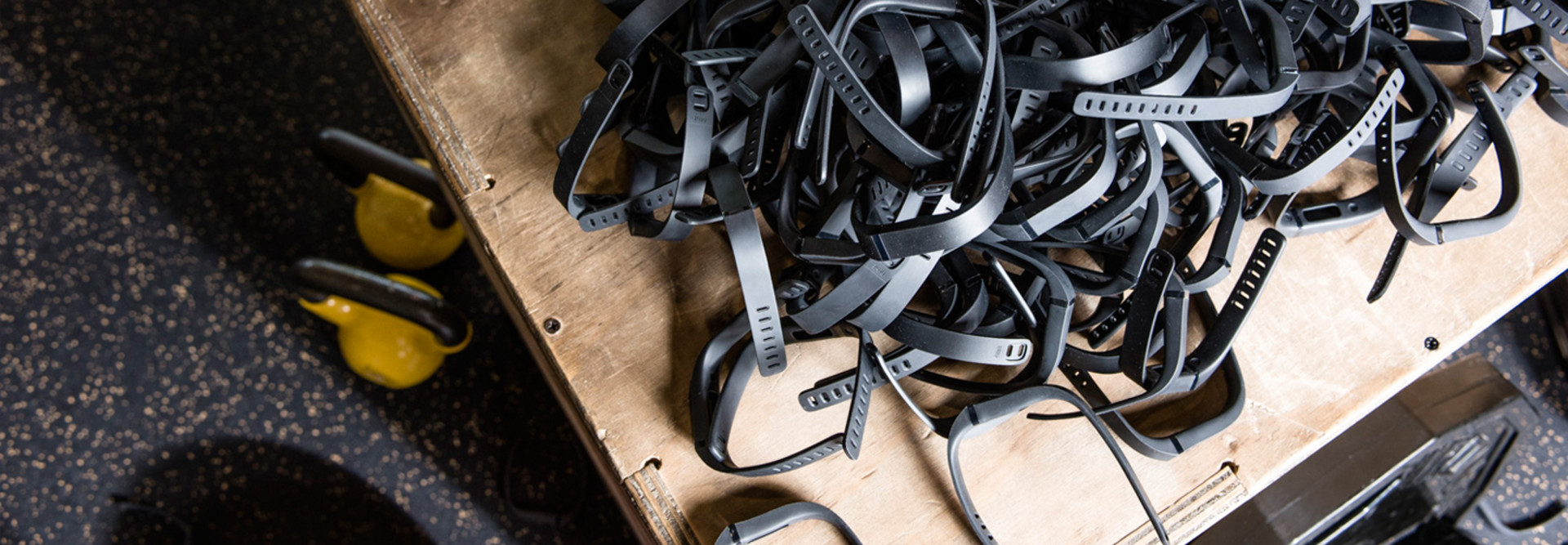The Latest Campus Fashion: Wearable Technology
Looking to improve both employee morale and the overall culture, Tarleton State University in Stephenville, Texas, sought a way to meld wellness efforts and overall employee satisfaction.
Shanna Moody, assistant director for fitness and wellness with the university’s recreational sports department, along with Tarleton’s director of student health services, started a task force that came up with a plan to provide a Fitbit activity tracker to every employee on campus. To date, the wearable technology has seen incredible adoption, Moody says: Out of the 800 full-time faculty members and staff who are eligible for the wearable tech program, nearly half have requested and started wearing the device within the program’s first month.
“The only requirement that my university president gave me was he didn’t want us to just give them away,” Moody says.
Instead, every employee was required to request a band online and verify that they were making some sort of healthy lifestyle commitment as a result.
Tarleton State is one of many higher education institutions that are taking advantage of wearable technology as a way to give students and employees better — and more healthful — experiences both in and out of the classroom. Many also use wearable technologies to improve the educational process.
Wearable, Wherever
Maya Georgieva, associate director of New York University’s Center for Innovation in Teaching and Learning, says that, two years ago, professors at NYU’s Stern School of Business started giving incoming students tiny cameras that automatically capture video and render it searchable and sharable. Students walked through the city wearing the devices, which weigh less than an ounce.
The devices were recently used as part of a project that asked students to figure out ways to reduce traffic accidents in the city.
“Students actually left the building to go look at intersections in and around NYU and think about new solutions around creating a new urban space,” Georgieva says. “The cameras provide a great way for students to be able to look back and think about their observations.”
Because the cameras were attached to the students and constantly recording images, students could think, discuss and react to what they were seeing instead of having to stop to press a button, she says.
“Instead of students having their phone or their camera — spending all their time taking pictures — they can, actually, very actively observe their environments.” The process translated into better ideas and thought processes, she says, and it’s something she thinks can be put to use in other departments and schools.
Multifaceted, Multifunctional
Wearable devices — including cameras, fitness trackers and other personal technologies — may prove useful for a variety of institutions, as both students and staffers discover new ways to leverage their functionality, says Ryan Martin, an analyst who covers the Internet of Things and wearable technologies for 451 Research.
“Whether for health or wellness or for new sources of data and information or new outlets of content creation, wearable technology makes programs more cost-effective and more accurate,” Martin says. It’s not just increasing time on task for students and teachers, he says, but also improving the quality of the tasks that are being completed.
That is the case for students at Penn State University, says Conrad Tucker, an assistant professor of engineering design and industrial engineering. Last summer, the university started a program to see how virtual reality would affect undergrad and graduate school education. As part of the program, Penn State tapped wearable VR headsets and gloves that allow students to immerse themselves in an environment.
“Any student can come in, put a device on and engage in specific engineering activities that we designed,” Tucker says.
Unexpected Value
Organizers used the tools to determine whether differences in cognitive and conceptual understanding of engineering tasks exist and, if they do, how quickly students could complete their tasks with or without the help of the technology.
“The results were surprising,” Tucker says. “We discovered statistically significant differences in the completion time for students who had the wearable headset versus students who were just looking at the same screen on a laptop monitor.”
In the end, Martin says, those kinds of results are what will propel wearables onto campus and into the main-stream world.
“When people focus on the use cases and not just the technology, real benefits can be achieved,” he says. “They can be incredibly effective and provide a true opportunity for improving the learning experience for students of all ages.”









